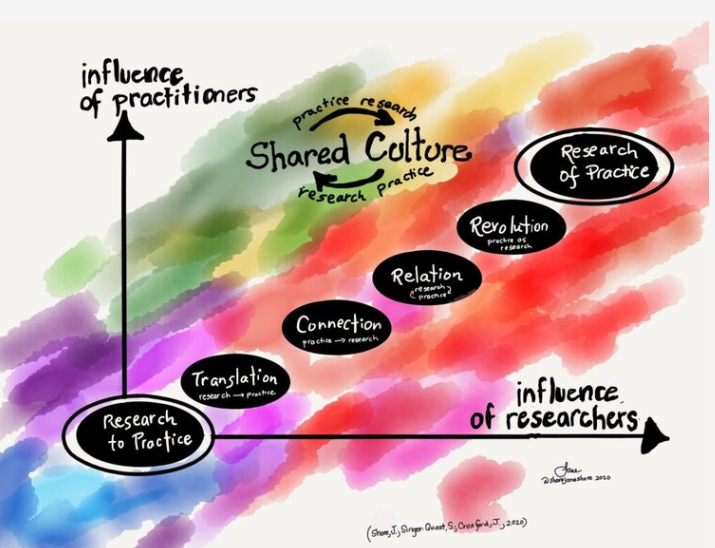A Manifesto of Interdisciplinarity
This post from the Methodspace archives is relevant now, because we are looking at why and how to cross disciplinary boundaries to conduct more relevant research. Rick Szostak is an expert on interdisciplinary research and the co-author of two recent book editions, Introduction to Interdisciplinary Studies (2019) and Interdisciplinary Research: Process and Theory (2020). He also co-authored the 2011 Case Studies in Interdisciplinary Research.
In this post, which originally appeared on the Integration and Implementation Insights (also known as i2Insights) blog, Dr. Szostak explains the concept of interdisciplinarity. His point that "the world faces a host of challenges that cannot be addressed by any one discipline in isolation" could not be more relevant than in our situation today!
Is there a shared understanding of what interdisciplinarity is and how (and why) it is best pursued that can be used by the international community of scholars of interdisciplinarity, to both advocate for and encourage interdisciplinary scholarship? Is there consensus on what we are trying to achieve and how this is best done that can form the basis of cogent advice to interdisciplinary teachers and researchers regarding strategies that have proven successful in the past?
I propose a ‘Manifesto of Interdisciplinarity’ with nine brief points, as listed below. These are drawn from the original version, where key points are linked to more extended conversations, which in turn are linked to the wider literature. The nine points address what interdisciplinarity is, why it is important, and how it is best pursued.
The Manifesto
The essential feature of interdisciplinarity is integration: interdisciplinary research and teaching should seek to synthesize the insights generated by the specialized research undertaken within disciplines. This view is now common, though not quite universal, among scholars of interdisciplinarity. It can/should be incorporated in defining interdisciplinarity and reflects the latest thinking in the philosophy of interdisciplinarity.
Interdisciplinarity thus has a symbiotic relationship with disciplines. Though a minority of interdisciplinary scholars may be hostile to disciplines, the vast majority build upon disciplinary insights. Yet interdisciplinary research can also feed back useful advice to disciplines on how these might benefit from greater openness to the ideas of others.
Interdisciplinary researchers face a common set of challenges. A variety of interdisciplinary research strategies have been found useful in transcending these challenges. Many interdisciplinary researchers fail due to ignorance of these challenges and strategies. Others waste valuable time and energy reinventing strategies that others have applied for decades. Interdisciplinary research can be evaluated in terms of the strategies employed in addressing interdisciplinary challenges (of course, disciplinary theories and methods should also be applied correctly).
There are likewisecommon challenges in interdisciplinary teaching and program administration. Again, a set of strategies have proven useful over the years in addressing these.
The world faces a host of challenges that cannot be addressed by any one discipline in isolation. A proper understanding of interdisciplinarity can greatly enhance our ability to cope with complex public policy problems.
Indeed, much of the contemporary concern with “anti-intellectualism” can be traced to a vague public understanding that interdisciplinarity is of critical importance but that there is intellectual confusion regarding how this should be pursued. A better understanding of interdisciplinarity can be critical in restoring public faith in the scholarly enterprise as a whole.
There are important synergies between the skills and strategies associated with interdisciplinarity and the skills and strategies associated with both creativity and cross-cultural understanding. An interdisciplinary education thus also fosters creativity and understanding.
Interdisciplinary analysis can be performed by individuals or in teams. Both individuals and teams face surmountable challenges.
Universities have for centuries been organized around disciplines. There are important changes that universities must make to university administration in order to foster interdisciplinary research and teaching. It should be obvious that universities will be better prepared to administer interdisciplinarity if they first appreciate what interdisciplinarity is and how it is best pursued.
Discussion
I am not (quite) naive enough to imagine that the entire international community of interdisciplinary scholars will agree with every point I make. But I do hope that most will agree with most of what I suggest. I hope to encourage a conversation that can lead to an even greater degree of consensus. I am actually much more concerned that we agree on something than that we agree on the precise points that I outline.
In a previous blog post, I argued for the importance of not ignoring interdisciplinarity’s critics and the Manifesto also plays an important role here, especially when critics attack a ‘straw man’ interdisciplinarity that bears no resemblance to that in which I engage.
As just one example, Jerry Jacobs published In Defense of Disciplines in 2013, arguing that interdisciplinary scholars were hostile to disciplines. Yet I think the vast majority of interdisciplinary scholars build upon insights generated within disciplines. We recognize the value of communities of scholars with shared understandings of theories and methods and terminology. Yet we also recognize the limitations and biases inherent in disciplines, and believe that we can achieve more comprehensive understandings on a range of issues by integrating across disciplinary insights. We may disagree about how much the present set of disciplines merit reform but we can agree that there is a place for specialized research and teaching. We can, as a community, better defend ourselves against a misguided critique of interdisciplinarity, like that of Jacobs, if we can point to some clear statement of the principles that guide us as a community.
Do you see value in an attempt to achieve consensus around what interdisciplinarity is, and why and how it is best pursued? Do you think it is feasible to do so? How do you evaluate the precise content of the Manifesto and its supporting documentation?
Reference
Jacobs, J. (2013). In Defense of Disciplines: Interdisciplinarity and Specialization in the Research University. University of Chicago Press: Chicago, United States of America
Biography: Rick Szostak is Professor and Chair of Economics at the University of Alberta, Canada and past President of the Association for Interdisciplinary Studies (AIS). He is the co-author of ‘Interdisciplinary Research: Process and Theory’ and ‘Introduction to Interdisciplinary Studies’, and coordinated the development of the About Interdisciplinary and Interdisciplinary General Education pages listed under resources on the Association for Interdisciplinary Studies website.












The Director and Assistant Director of the Bass Connections program at Duke University share lessons learned and open access resources for team success in interdisciplinary collaborative research.